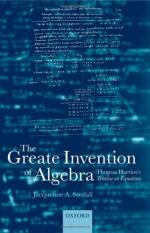|
This section contains 18 words (approx. 1 page at 300 words per page) |

|
1560?-1621
English Mathematician
Thomas Harriot invented the signs for "greater than" (>) and "less than" (<) in use today, and was one of the first mathematicians to use a number of now-commonplace symbols. Much of his work involved astronomy, navigation, and geometry: an employee and associate of Sir Walter Raleigh (1554-1618), he was at the center of English efforts to conquer the seas and the New World.
Harriot was educated at St. Mary's Hall, Oxford University, from whence he received his B.A. in 1580. For a time, he appears to have worked as a mathematics tutor in London before securing employment with Raleigh in 1584. The famous gentleman-explorer needed someone to teach navigation to his sailors, and for this purpose Harriot composed a manuscript—long since lost—called the Articon.
During the following year, Raleigh sent Harriot with a group of colonists to Roanoke Island off the coast of...
|
This section contains 18 words (approx. 1 page at 300 words per page) |

|


